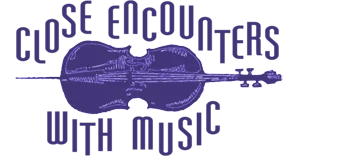Schoenfield 6 British Folk Songs Peccadilloes. Refractions
AMERICAN CLASSICS
The first notes from the CD under review made me think that I was listening to a previously unknown work of Charles Ives. Folk song, polytonality, “wrong” notes, exuberance all the hallmarks of Ives’s distinctive style are there. It is delightful from the get-go. By the second (“The Basket of Eggs”) of the Six British Folk Songs, I realized that Paul Schoenfield has his own distinctive style: Here the mood becomes much more introspective and meditative, even lyrical. It’s a gorgeous little piece. The variety of styles employed continues through the rest of this cycle and on throughout the CD. Florid passages of running notes, the occasional creeping in of jazz influences, rhythmic vitality, a sly quote here and there (my ears perked up in the fifth of the songs when I heard a snippet of the Shostakovich Fifth), and inventive accompanimental textures are all much in evidence in this music. My earlier description of “delightful” applies to all of the works—and their individual movements on the disc.
A few words about Schoenfield would probably not be amiss for at least some readers: A native of Detroit, he studied piano with Ozan Marsh, Julius Chajes, and Rudolf Serkin (and believe me, Schoenfield is a terrific pianist!). He began writing music at age seven, essentially training himself to compose by listening to copious quantities of music, often with scores in hand. He cites Bartók and Ravel as having been particularly influential on his own music. Schoenfield later studied at Carnegie Mellon University, ultimately receiving his D.M. from the University of Arizona. He currently is on the faculty of the University of Michigan, and his wide-ranging interests include Talmudic studies and mathematics.
The solo piano suite Pecadilloes draws inspiration for both its title and music from Rossini’s Sins of My Old Age. The titles of the movements (“Allemande,” “Fughetta,” “Rag,” “Waltz,” “Shuffle,” and “Boogie”) suggest both Baroque and modern jazz influence, and indeed these are to be heard in good measure here. The concluding “Boogie” has the flair of Nikolai Kapustin, but maintains a distinct American flavor. Pianist James Tocco suggests that it is a real killer to play, but he brings off the entire suite with panache and pizzazz aplenty.
The opening movement, Toccata, of the concluding suite, Refractions, sounds to my ears like the music of Jean Françaix put through an American filter. It contains every ounce of joie de vivre that one would encounter in anything by the French master. The following March is quite a bit more astringent, but delightful in its own way. The Intermezzo again sheds light on Schoenfield’s gifts both as a melodist and a colorist (note the ghostly effect near the end of the movement), and the concluding wild Tarantella again conjures up the ghost of a slightly more polytonal Françaix.
Given that I’ve already singled out for praise the piano playing of Schoenfield and Tocco on this recital, I must do the same for that of cellist Yehuda Hanani, whose articulation, phrasing, and use of portamento is as good as any cellist I’ve ever heard. He is clearly a major artist on his instrument. The spirited playing of clarinetist Alexander Fiterstein is likewise commendable. His approach to the music perfectly captures its essence, and he also very effectively uses portamento where it’s called for.
It would be difficult for me to imagine any music lover not being utterly captivated and enchanted by this CD. This disc will be a strong contender for my next Want List, and will be listened to repeatedly in my home. I hope to hear much more of Schoenfield’s work as I have the opportunity (yes, this is a big hint to the editor, should he receive more CDs with this composer’s work on them, to send them my way.) Don’t delay in picking up your copy. David DeBoor Canfield

